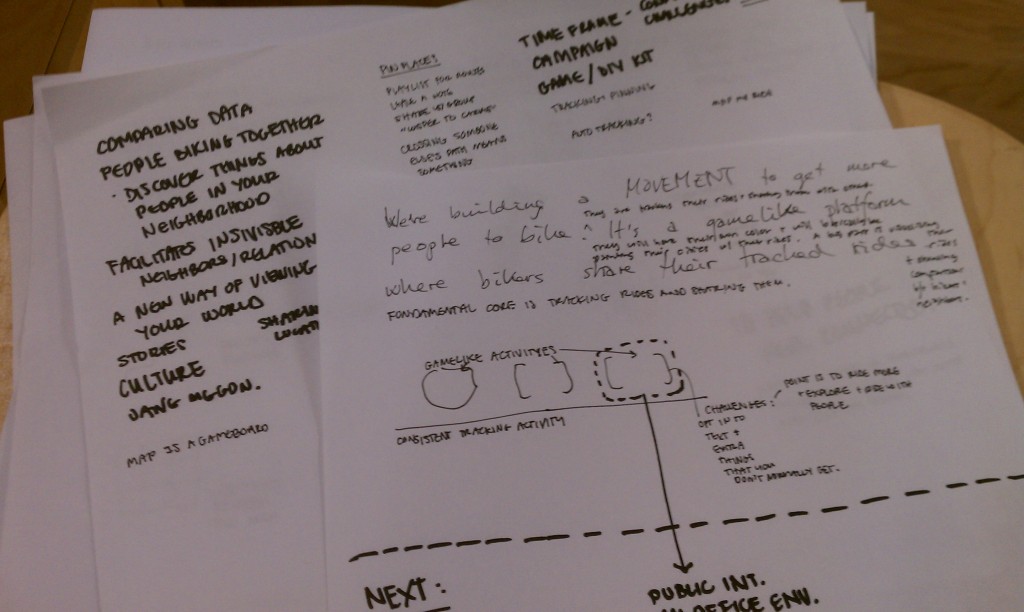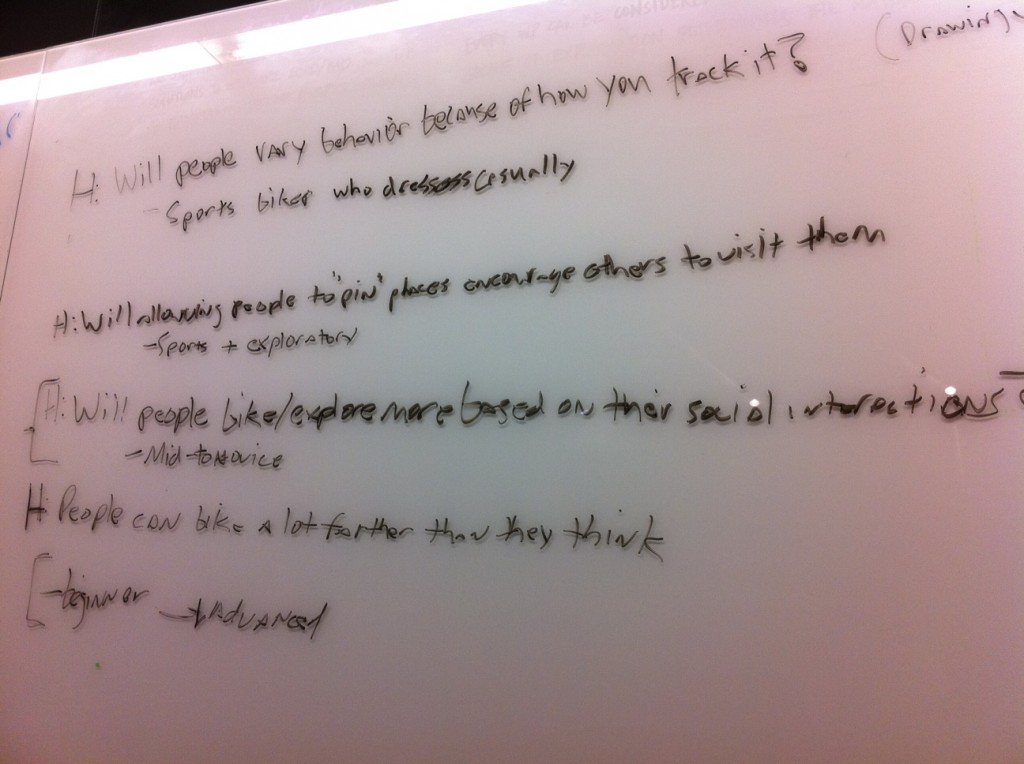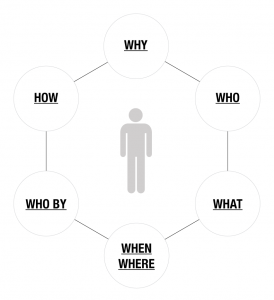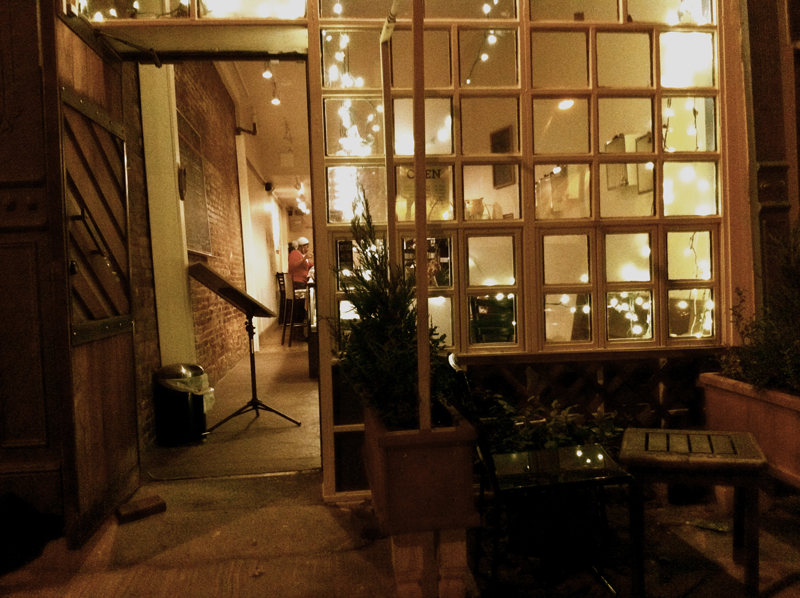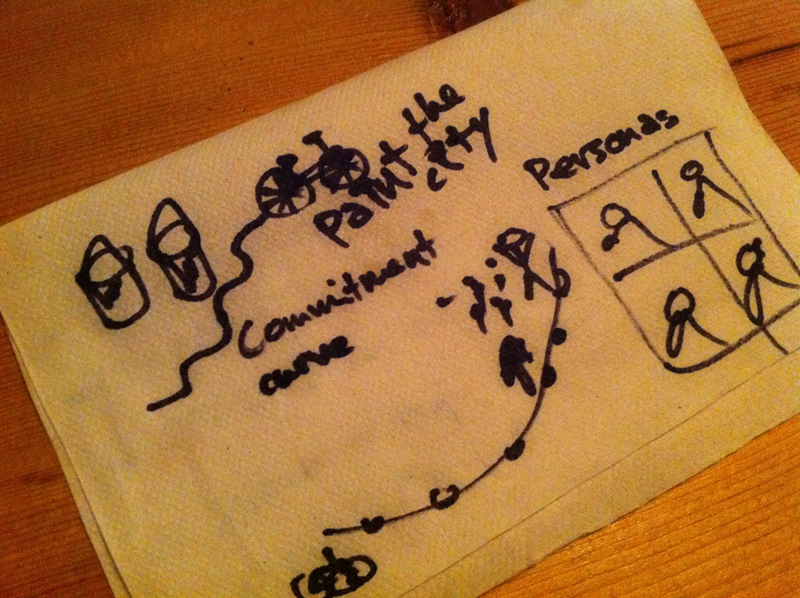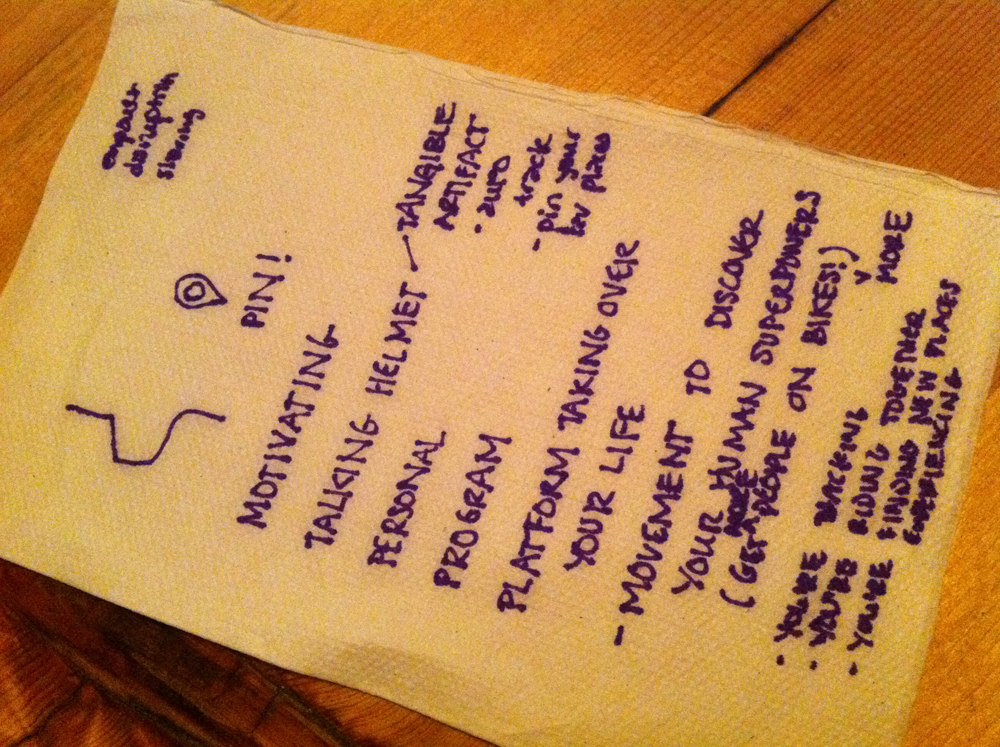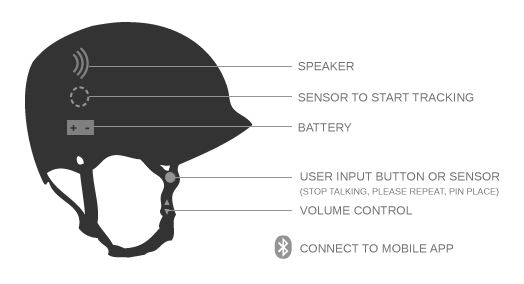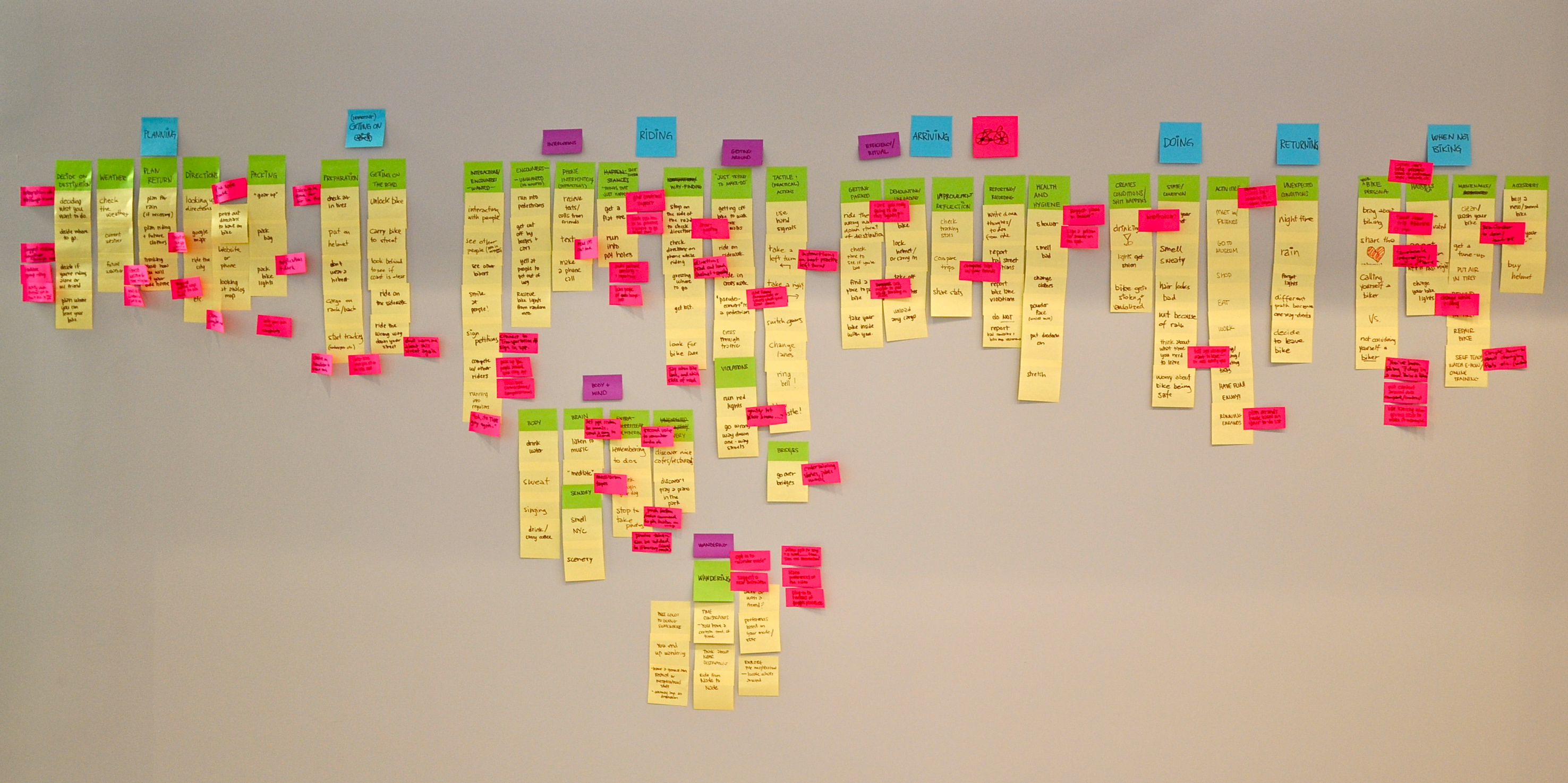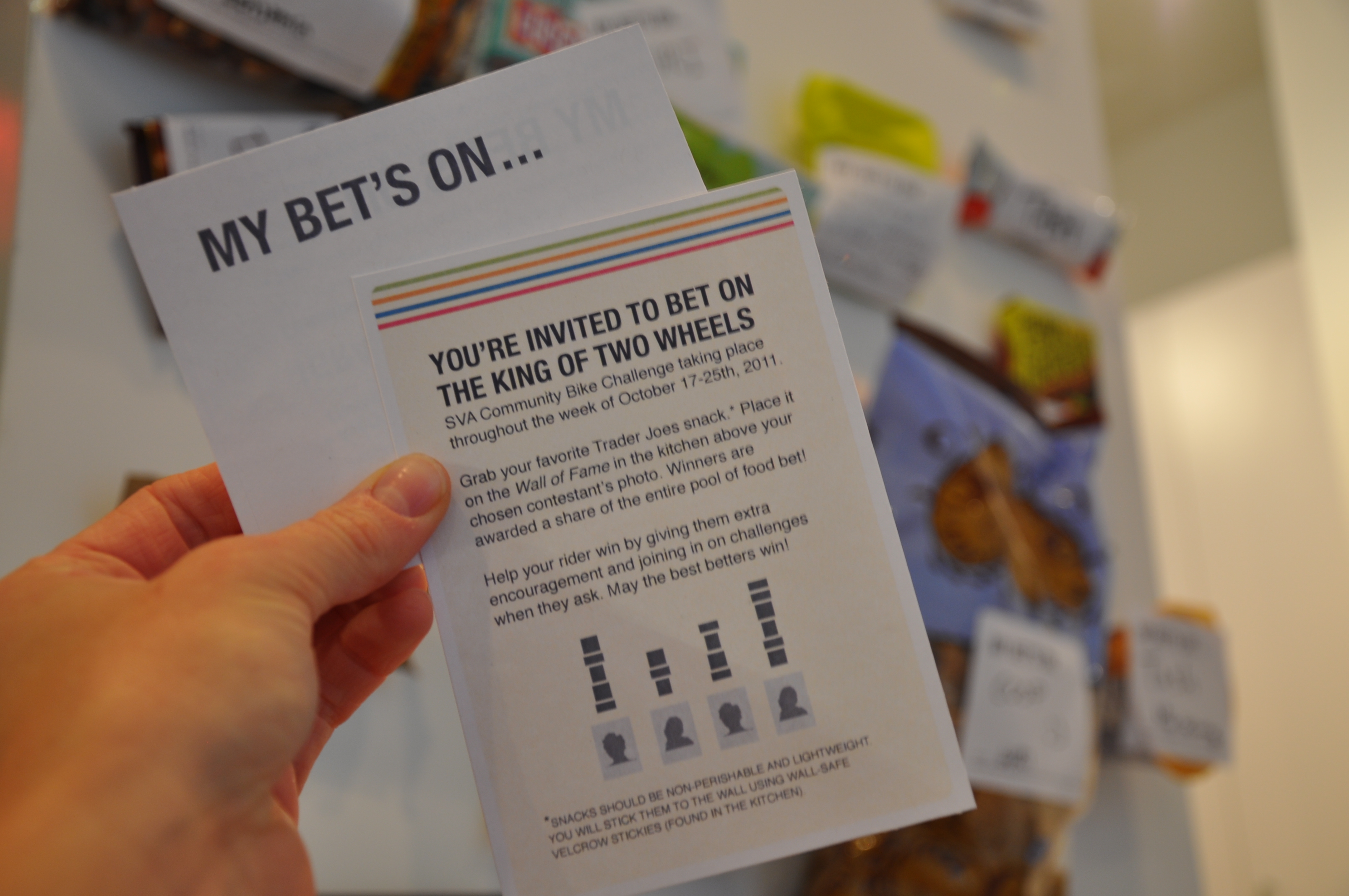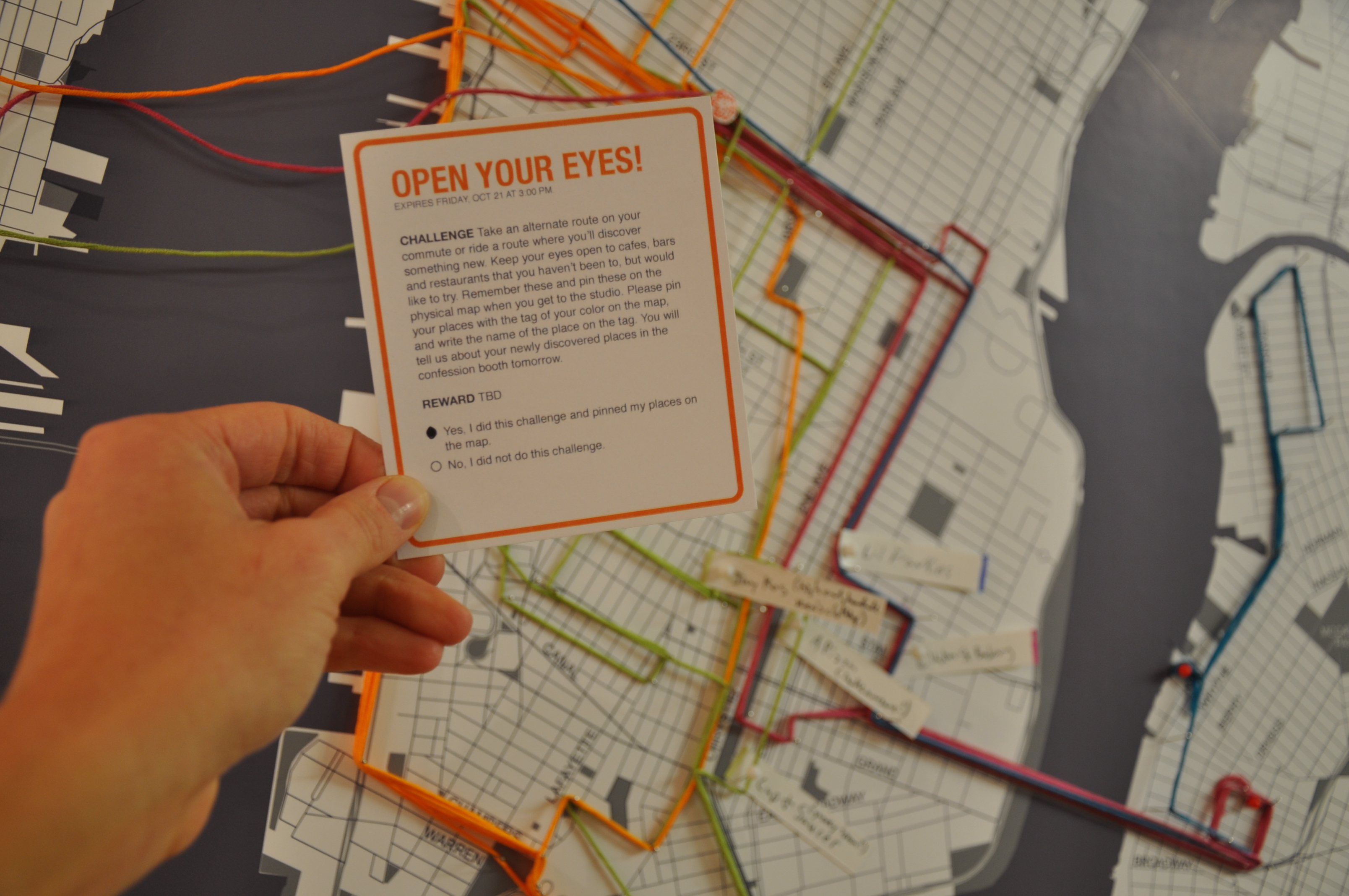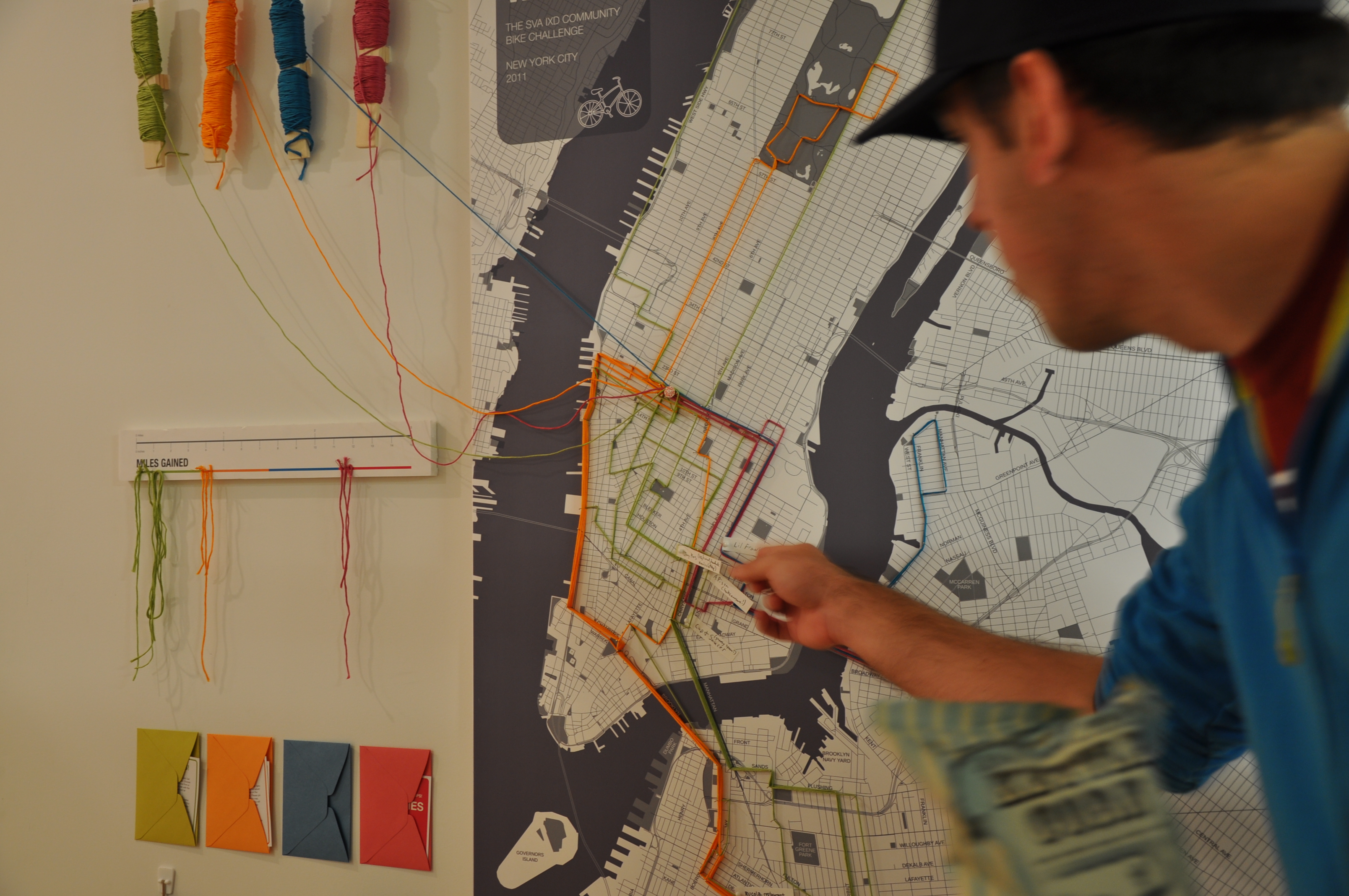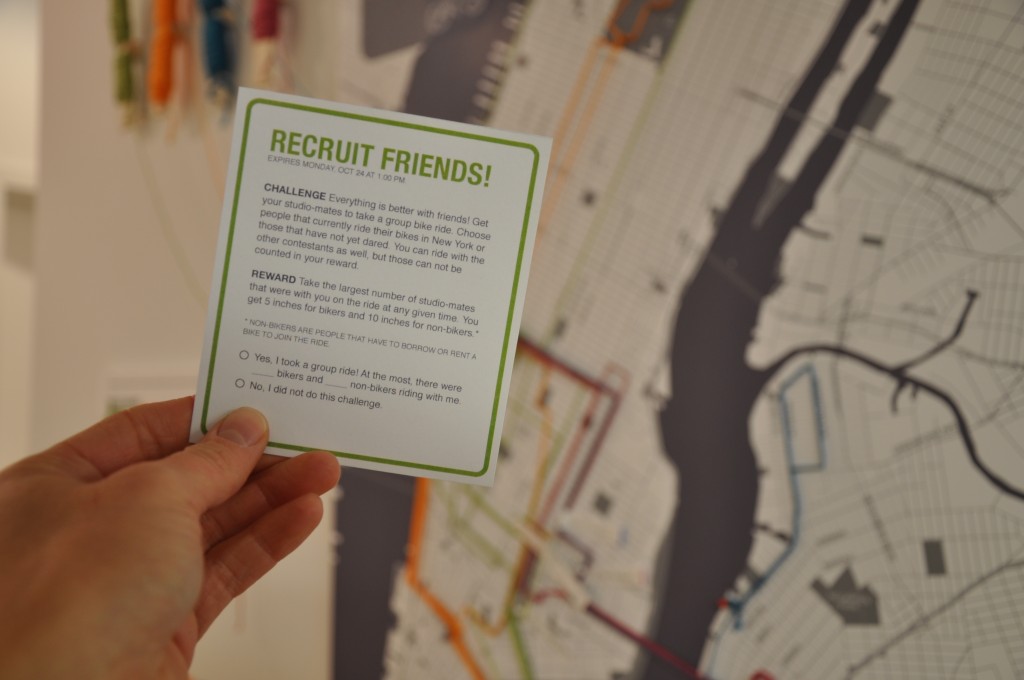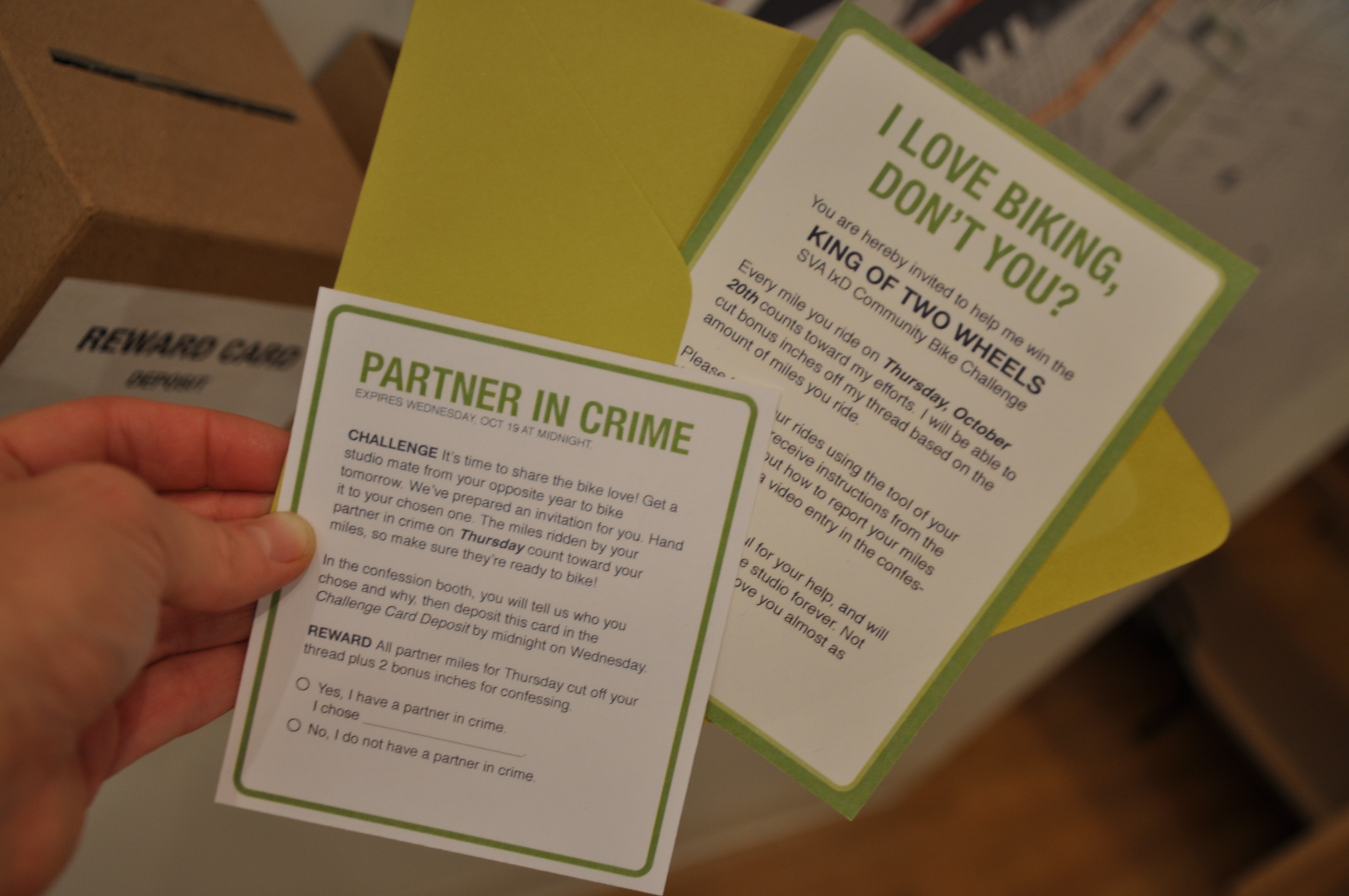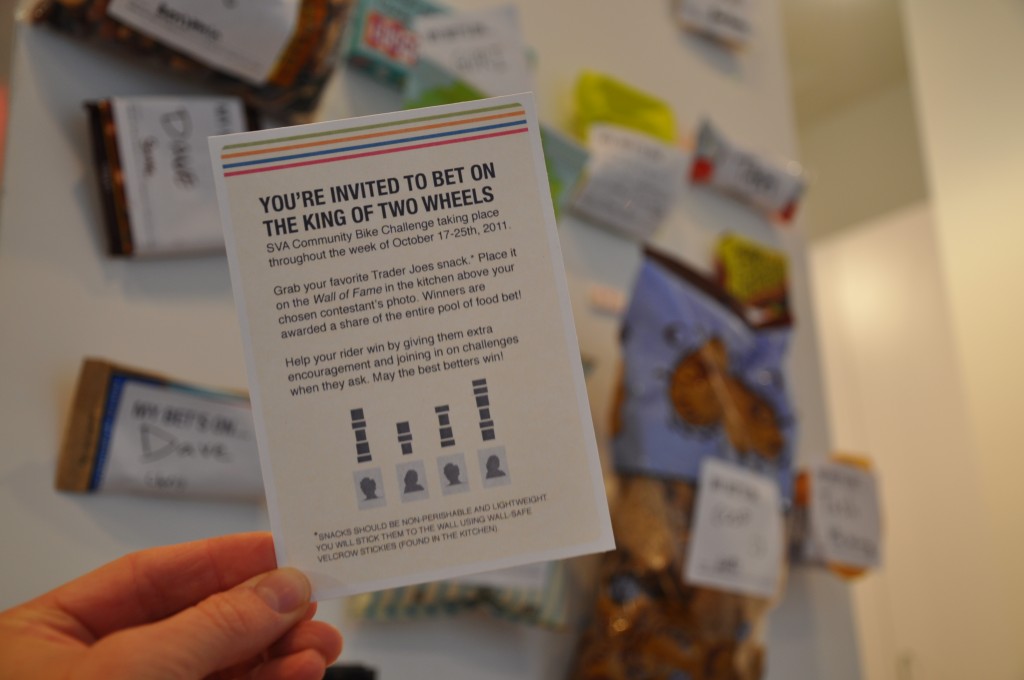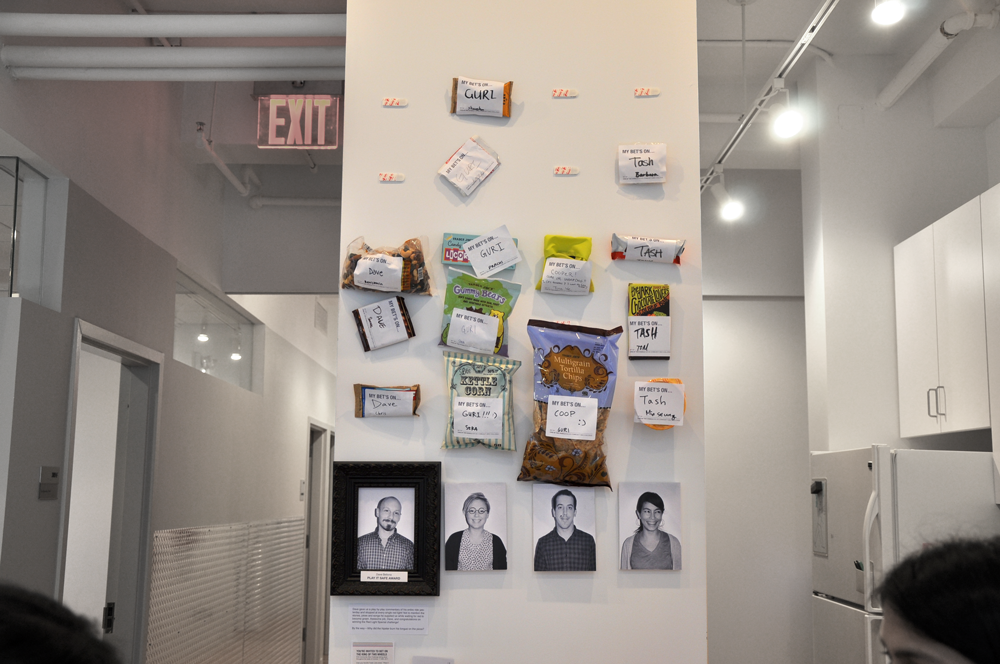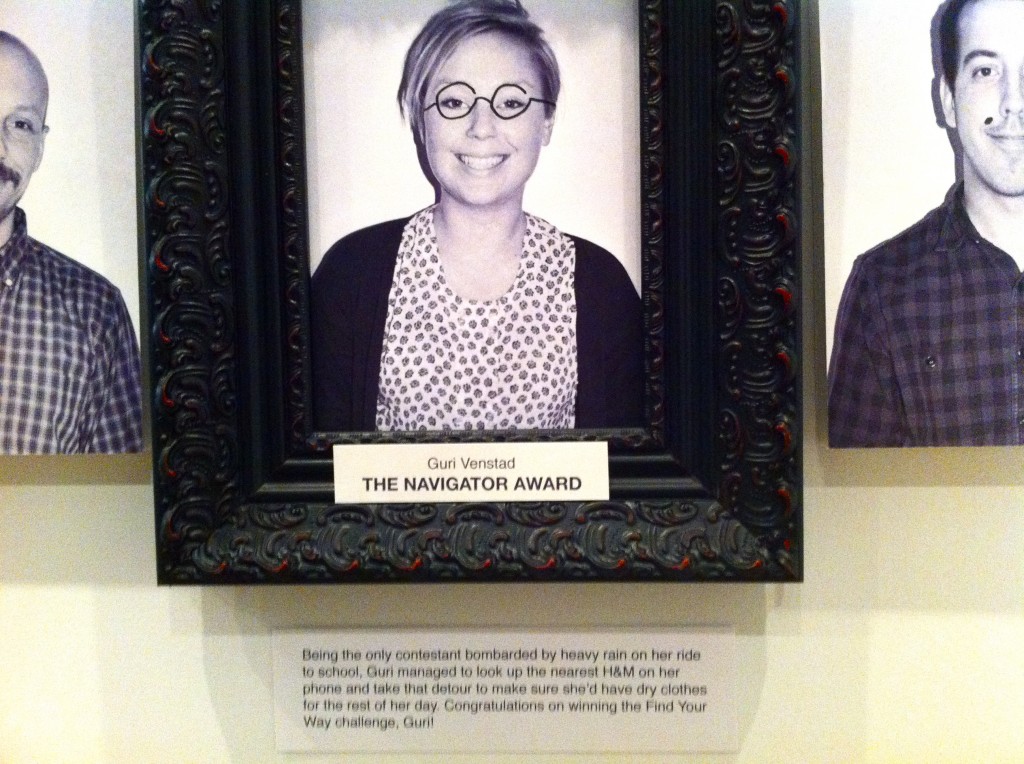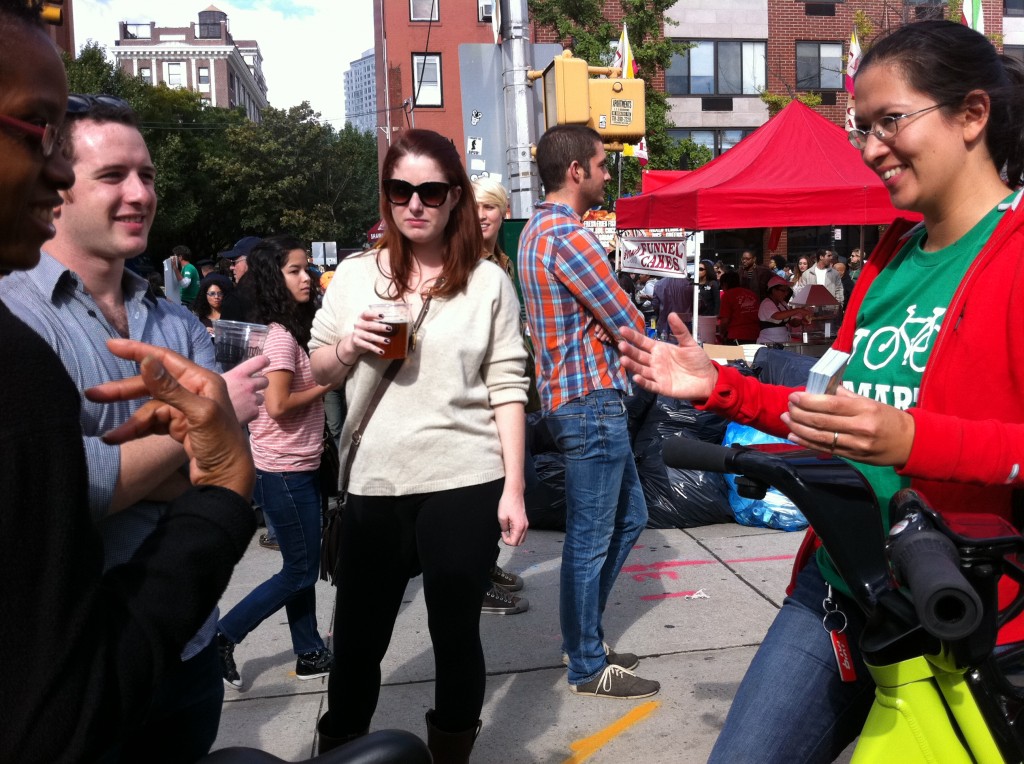Our intention is to increase ridership and make trips seamless for bikers in urban areas. We recognize that people love to bike in the city but there are also many hassles and pain points that keep people from riding. Taking the bike is both good for human health, the environment and the economy. We want to help people stay on their bikes and encourage the ‘not yet convinced’ that biking is a viable mode of transportation.
ELEVATOR PITCH
We are making a digital toolset embodied in a physical helmet to be used by urban bikers that allows for a seamless riding experience. It will provide spoken directions, track riding habits and facilitate documentation of trips and communication with friends. Unlike a high-tech GPS bike computer, it has a charming personality and is geared towards the casual biker rather than the cyclist pro.
OUR FOUR MAIN CONCEPTS
Way-finding knowing where to go and how to get there, alleviating the stress of navigating while on your bike in a chaotic city
- find a safe route
- change suggested mode
- write your own route, list waypoints
- change suggested mode
- say when there’s bike lane and which side of road it’s on
- warn people of bumpiness
Discovery helping people remember and experience the interesting places they see on their rides (cafes, bars, restaurants, etc.), suggesting new places to visit.
- allow users to log their favorite places
- push button or voice command to pin location on a map
- consider integration with Yelp and/or Google Places
- plug into reviews from Yelp and/or Google Places
- learn preferences of rider
- provide commentary on sites
- opt into ‘wander mode’
- localized itineraries
- suggest a near destination
- allow people to say ‘I have 2 hours. Take me somewhere…!’
Tracking documenting where riders have been, revealing patterns in biking behavior, helping people feel proud of accomplishments and encourage sharing their progress
- sensor in helmet to auto-track when you sit on the bike seat
- put context around data, compare and contrast
- use variety when giving stats to make it meaningful
Motivation providing a way for riders to challenge people to ride their bikes, using social pressure, coordinating rides
- compare trips with your friends
- read aloud SMS from friends
- notify friends when rider gets on the bike to ride
- suggest and facilitate riding with friends and/or group rides
- facilitate conversation and competitiveness between users
- facebook sharing
- tweet about trip to bike community #BikeNYC
- report stories and funny encounters
- site specific encouragement and stories
- play music from local bands performing that week
- let people listen to their own music
INTENDED AUDIENCE
Intermediate riders
People currently biking in the city. They might already use navigational tools like bike maps and apps, and are searching for new ways to make their trips more seamless whether they want to get from A to B or wander.
Beginner riders
There’s a difference between knowing how to ride a bike, and being confident riding in an urban environment. Beginner riders might use their bike for recreational trips and are not yet convinced that biking can be a viable transit option.
Tourists on bikes
People that want to explore a new city from the bike seat. Might rent bikes from bike shops, or using bike share programs.
CONTEXT OF PROJECT
The bike community
Open Plans, Bike Share, Ride the City, Transportation Alternatives, New York City DOT, Bike Tech Meetup, Bike activists (bloggers, political figures, etc.)
Bike Tools
mobile apps that track behavior, apps aiding navigation, bike computers for pro cyclists, GPS for bikers (TOM TOM has turn by turn voice directions in Europe)
Products with related concepts
Motivational, data sharing, storytelling, creative personalities, way finding, trip planning, etc.
Websites and apps: Weight Watchers, RunKeeper, Nike+, Daytum, OpenTripPlanner, TripAdvisor, Yelp, Tamagotchi etc.
INTENDED FORM AND EXPERIENCE
The form of the product is a helmet with speakers, mic, sensors and buttons along with a mobile app. It is a friendly and delightful product that is aware of what the biker needs and when, alleviates stress from biking in chaotic surroundings, eases the process of using your bike for transit and inspires discovery of new places.
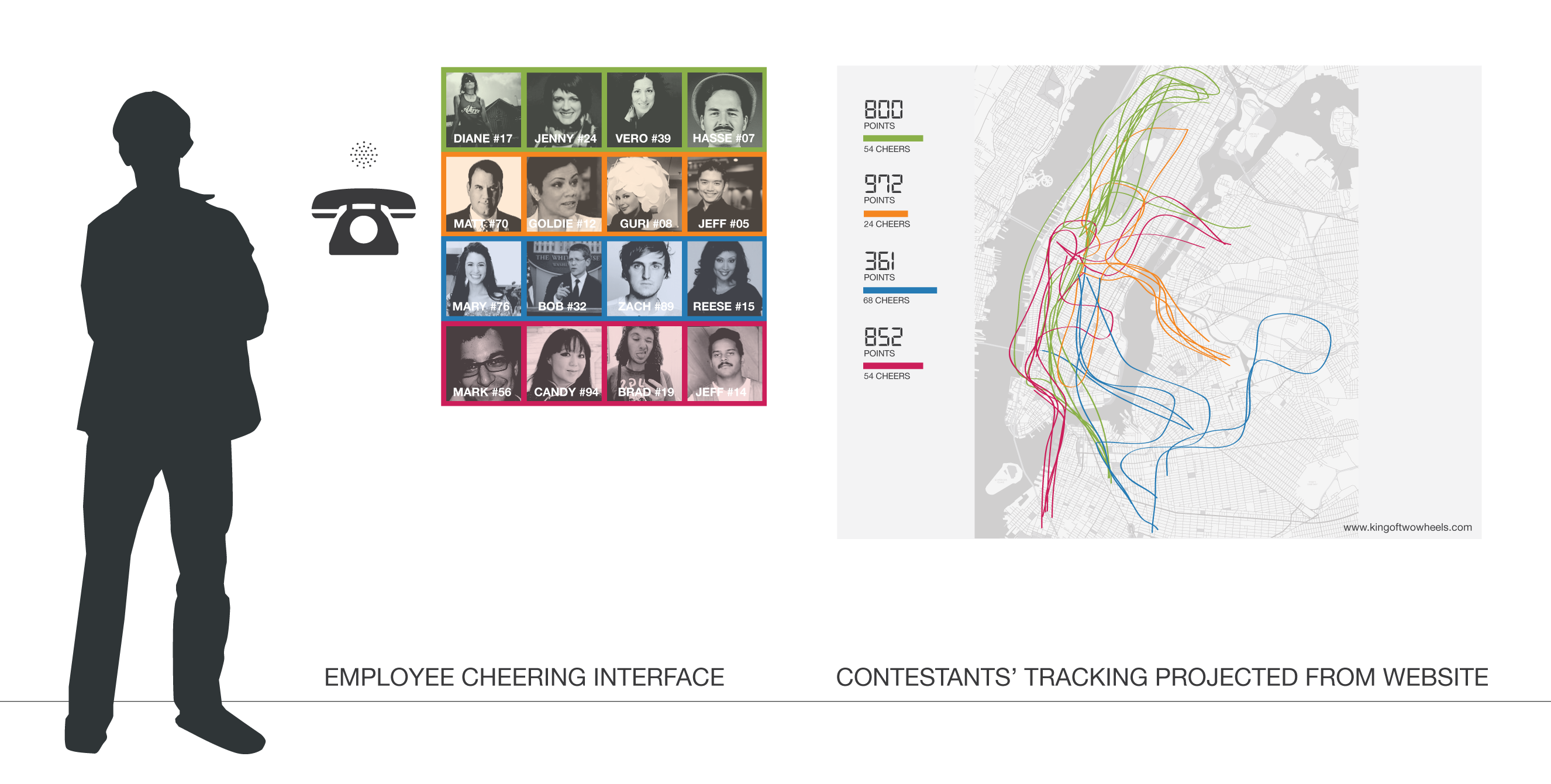 As we mentioned in A Shift to Motivation, our thesis project will involve an online platform for riders to track their rides along with game challenges that can be hosted between friends, co-workers and strangers. For our Public Interfaces class, we want to focus in on one type of challenge that can be hosted in an office where 4-person teams compete for riding the most miles.
As we mentioned in A Shift to Motivation, our thesis project will involve an online platform for riders to track their rides along with game challenges that can be hosted between friends, co-workers and strangers. For our Public Interfaces class, we want to focus in on one type of challenge that can be hosted in an office where 4-person teams compete for riding the most miles. 